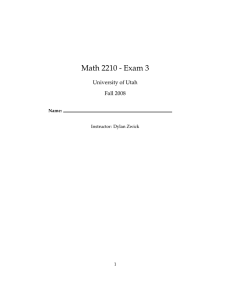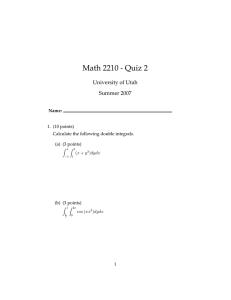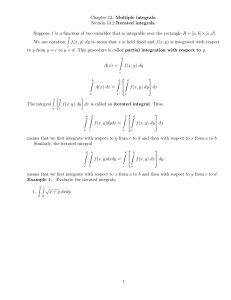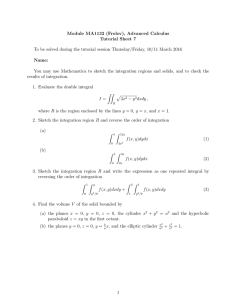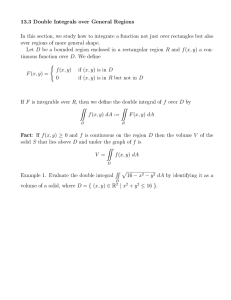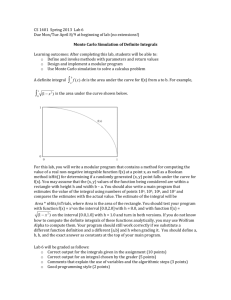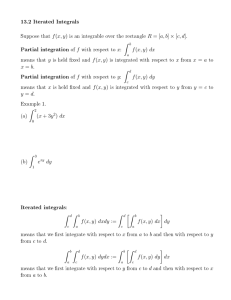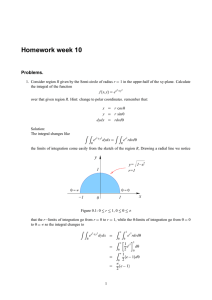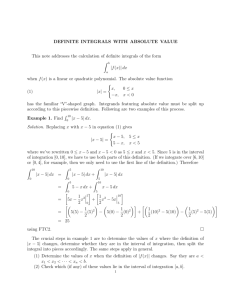Lecture Notes, M261-004, Multiple Integrals Oct 8, 2008
advertisement
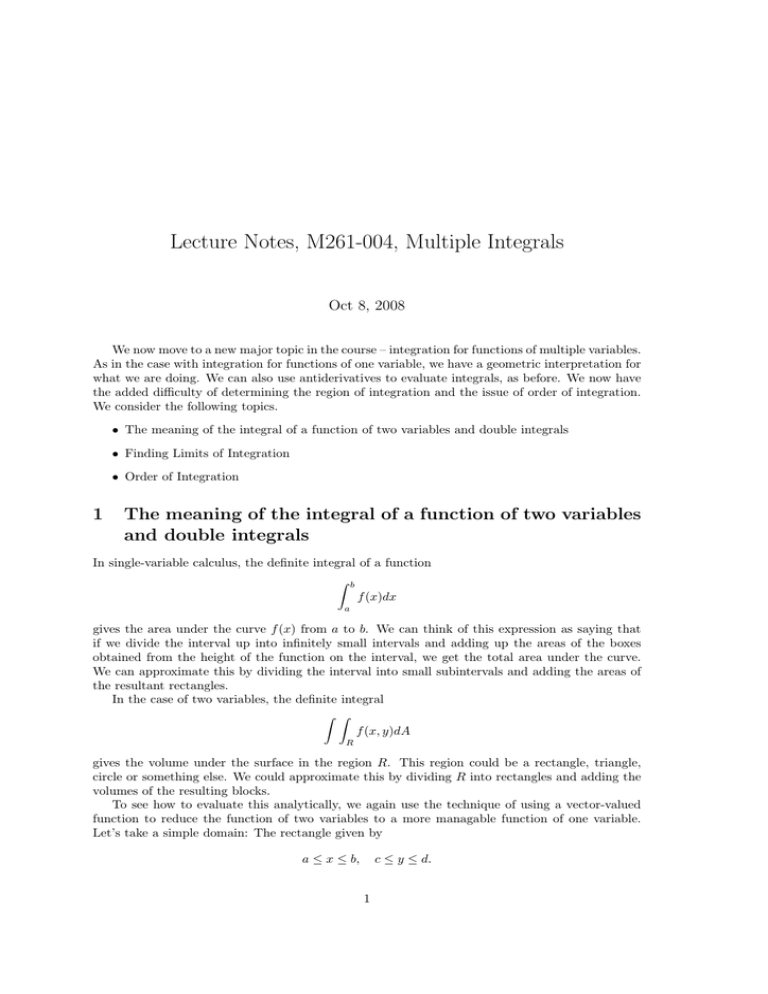
Lecture Notes, M261-004, Multiple Integrals Oct 8, 2008 We now move to a new major topic in the course – integration for functions of multiple variables. As in the case with integration for functions of one variable, we have a geometric interpretation for what we are doing. We can also use antiderivatives to evaluate integrals, as before. We now have the added difficulty of determining the region of integration and the issue of order of integration. We consider the following topics. • The meaning of the integral of a function of two variables and double integrals • Finding Limits of Integration • Order of Integration 1 The meaning of the integral of a function of two variables and double integrals In single-variable calculus, the definite integral of a function Z b f (x)dx a gives the area under the curve f (x) from a to b. We can think of this expression as saying that if we divide the interval up into infinitely small intervals and adding up the areas of the boxes obtained from the height of the function on the interval, we get the total area under the curve. We can approximate this by dividing the interval into small subintervals and adding the areas of the resultant rectangles. In the case of two variables, the definite integral Z Z f (x, y)dA R gives the volume under the surface in the region R. This region could be a rectangle, triangle, circle or something else. We could approximate this by dividing R into rectangles and adding the volumes of the resulting blocks. To see how to evaluate this analytically, we again use the technique of using a vector-valued function to reduce the function of two variables to a more managable function of one variable. Let’s take a simple domain: The rectangle given by a ≤ x ≤ b, c ≤ y ≤ d. 1 Z Z We want to evaluate f (x, y)dA R over this region. For any fixed x, the function f (x, y) is a function of one variable – y. (We are implicitly using the vector-valued function r(t) = hx, ti.) We know how to integrate this function over the interval from c to d: Z d f (x, y)dy c We would just evaluate this integral and treat x as a constant. We expect this to give a different result for every x, so we might use this to define a function of x: A(x) = Z d f (x, y)dy c We call this function A(x) because it gives the area under the surface for every cross-section obtained by holding x constant. But now we see that we can get the volume for the whole region by evaluating Z bZ d Z b f (x, y)dydx A(x)dx = a a c This is how integrals are evaluated in three variables. We express it as a double integral in x and y. Example 1. Evaluate Z 2π π 2 Z π (sin x + cos y)dxdy 0 Finding Limits of Integration So far, we have integrated over rectangles, where it is easy to determine the limits of integration. Usually, it is harder to do this. The easiest way to find the limits of integration is to sketch the region of integration and determine the limits from the sketch. It is always good to understand what the region of integration looks like, even if the limits are already given. Example 2. Integrate f (s, t) = es ln t over the region in the first quadrant of the st-plane that lies below the curve s = ln t from t = 1 to t = 2 RR xydA where R is the region bounded by the lines y = x, y = 2x, and Example 3. Evaluate R x + y = 2. Example 4. Sketch the region of integration for Z 1 2 Z y2 dxdy y 2 3 Order of Integration We can always change the order of integration when performing a multiple integral. We do sometimes need to be careful with the limits of integration when doing this, though. When in doubt, sketch the region of integration before switching the order. Example 5. Reverse the order of integration in each of the following examples. Z 0 3 Z 0 −2 Z (x2 y − 2xy)dydx Z 1 2 0 Z √ 4−x2 √ − 4−x2 0 Z dydx 1−x 0 Z 1−x2 3 Z ydxdy 1 √ 3 ey dydx x/3 3
